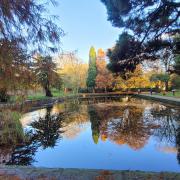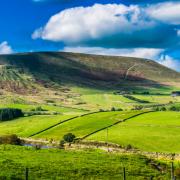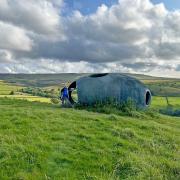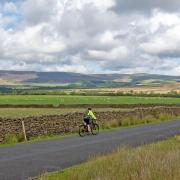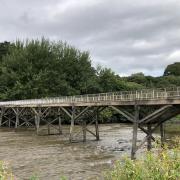Whether it’s an introduction to the fells or a fitting finale to walking life, Orrest Head can always offer a great walk, writes Keith Carter

Coming from Essex, the Lake District was as remote to me as Ulan Bator but when the school Cadet Force, or ‘The Corps’ as it was called, arranged a summer camp at Staveley I signed up for it. We came up by train and disembarked at Staveley railway station, formed up and were marched through the village like World War One soldiers going up the line to the trenches. I had my first night under canvas there and my first pint, a crafty one at the Eagle and Child since pubs were out of bounds. My first fell was Pike o’ Stickle from the Old Dungeon Ghyll and I was hooked just as Wainwright was on Orrest Head, his very first ascent.
It may be that the word ‘ascent’ is a little grandiose since there’s a big difference between walking up a hill and climbing a fell. Wainwright also calls it ‘a fitting finale’ for those whose glory days are behind them. The poet Danny Abse writes that in old age ‘all pavements slope uphill’, an acute observation.
Orrest Head is a worthy objective if only for the view from the top which takes in the giants like Scafell Pike and Great Gable as well as the jagged outline of the Langdale Pikes and the wave-crest outline of the Kentmere range.
Plenty of fellow walkers were out, many with their dog, when I found myself in good company doing this walk for the first time. Walkers’ cars are often left in the lay-by on the A591, just past the Windermere Hotel entrance although the limit is two hours which should be enough for this walk.
Start opposite the NatWest Bank on a minor road to the left of the hotel where a prominent signboard by a bench puts you on the right way. The tarmac lane winds steeply uphill then at a blacksmith’s forge leaves the tarmac and bears right among the trees and follows an obvious path to a gateway with two large stone blocks flanking it. They were set up in remembrance of the wide and beneficent liberality of the late Arthur Henry Heywood of Elleray who made his fortune in banking.
Through the gate a flight of steps leads to the summit plateau, liberally scattered with benches, where an engraved slab has been erected in memory of the revered Wainwright. Having soaked up the atmosphere, leave the summit on a path descending northwards, that is in the direction of a prominent white farmhouse in the distance, Causeway Farm. At a wall corner there is a kissing-gate, a wall-stile and a signpost, the latter pointing to Causeway 1/3mile and Cross Farm 1/2mile. Take the wall-stile and a faint field-path over sheep-cropped grass finds its way off the fell, crosses a stream and arrives at a metal gate with another wall-stile beside it. It brings us onto a lane where we turn left.
Walk on the lane passing Causeway Farm, then in half a mile look for a path on the left leading into woodland with a National Trust sign saying it is St Catherine’s. Cross a footbridge over a stream keeping right on a permitted path but ignoring a left fork where the path divides. At a kissing-gate leave the wood and keep left alongside a wall to a further kissing-gate, continuing in the same direction until we meet a gravel drive. Turn right here and stay on the gravel drive until just before it meets Patterdale Road, a signpost pointing left to Windermere.
Windermere and Bowness were once two separate villages where today they virtually merge, one into the other. It was the opening of the railway station that was Windermere’s trump card over Bowness which has always seemed to have more to offer. It has a more obviously touristy feel about it, especially in the summer months when the lake shore is alive with visitors. Windermere has always been to me a place you go through to get to Bowness or Ambleside and this through no fault of its own. At least it has Booths and the homewares store Lakeland to add to the feathers in its cap.
Our path is now well on the way back to Windermere, traversing the wooded lower slopes of Orrest Head past numerous solidly-built, respectable residences including Elleray Bank and Windermere Preparatory School, founded in 1863 in Lytham. Continue on the enclosed path with occasional glimpses of the lake through gaps in the trees, finally emerging on the lane coming up from the A591.
Turn right and in a few paces we are back at that sign advertising the attractions of Orrest Head. A young couple stopped uncertainly and addressed me.
‘Is this the way to Ossett Head?’
‘Orrest Head.’
‘That’s the one. Horace Head.’
‘Orrest.’
‘Will these shoes be all right?’ New trainers and fashion boots.
‘They might need cleaning later.’
‘Cheers, mate.’
Lucky I was there to put them right.
Compass points
Area of walk: Orrest Head, Windermere
Distance: 2 ½ miles
Time to allow: Two hours
Map: OS Explorer OL7 SE Lakes
Refreshments: Good choice in Windermere.
Useful book: The Outlying Fells of Lakeland by A.Wainwright.
Not suitable for wheelchairs or pushchairs
















